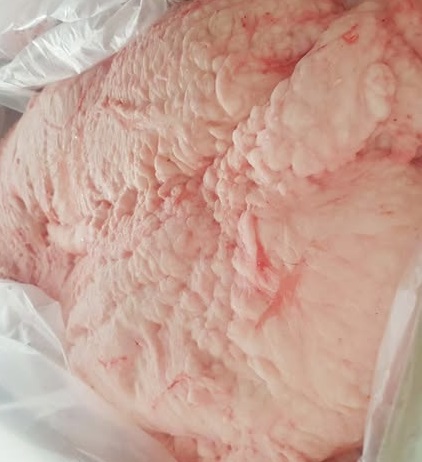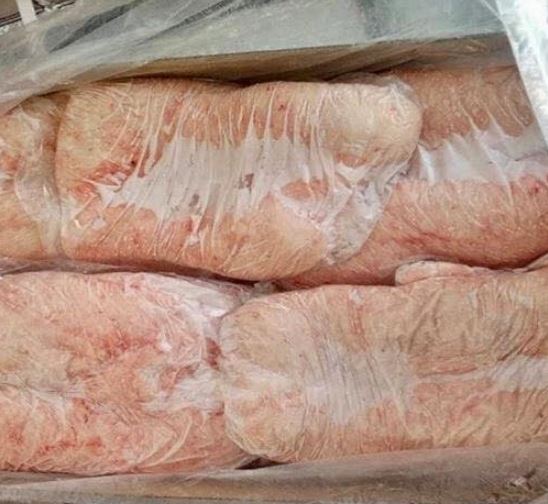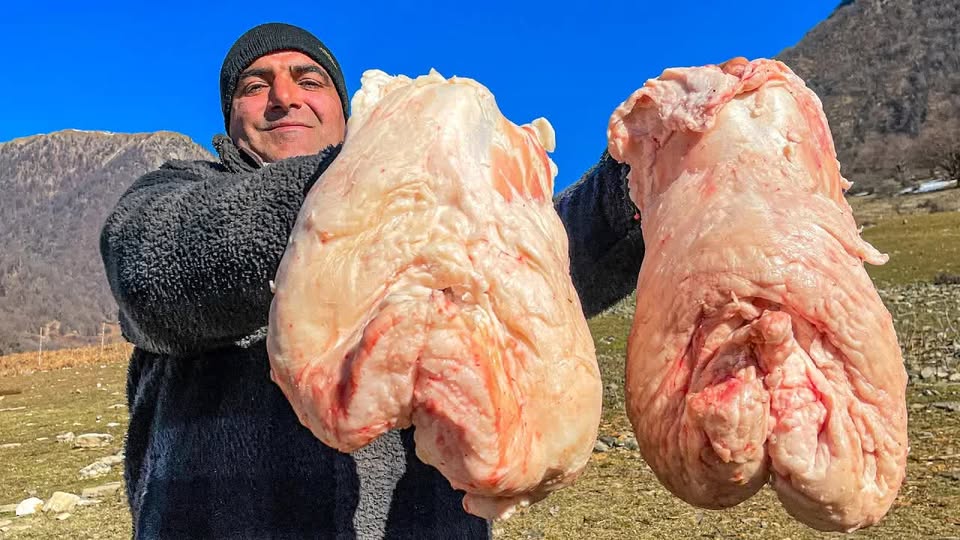Your cart is currently empty!

Why Is Sheep Tail Fat Special? + Nutrition Facts & Uses
Why Is Sheep Tail Fat Special? + Nutrition Facts & Uses
Sheep tail fat also known as “fat‑tail” fat, kurdyuk, or dumba in various cultures is not just any animal fat. It has a unique history, chemistry, and culinary appeal that makes it prized in traditional cuisines and increasingly interesting to modern chefs and food lovers. Below, we explore what makes it special, dig into its nutrition profile, point out pros & cons, and share ideas for how to use it. By the way, if you want to try a high-quality tailed fat, check out Sheep Tail Fat
What Is Sheep Tail Fat & Why It’s Unique
- Anatomical specialization
Certain breeds of sheep, particularly “fat-tailed” sheep, accumulate fat in the tail region (on the last few vertebrae) as a kind of energy reserve.
This stored fat can constitute a significant portion of the animal’s total fat deposits. - Adaptation to harsh environments
In arid or seasonal climates, having a fat reserve is beneficial. The tail fat can sustain the animal during lean seasons, much like a camel’s hump. - Culinary heritage & flavor
In many Middle Eastern, Central Asian, North African, and Mediterranean cuisines, tail fat has long been used as a cooking fat or flavoring agent. It imparts richness, helps keep meats moist, and adds depth of flavor beyond what standard animal fats may provide. - Texture & melting behavior
Sheep tail fat tends to melt more readily and has a smoother texture compared to firmer fats like beef suet. This property makes it easier to render and incorporate into dishes without excessive greasiness.
Given these traits, tail fat often commands premium value in specialty food markets. As you can see (and as offered by HSR Beef Products), premium grades of sheep tail fat are selected for softness, purity, aroma, and freshness. See their product page here
Nutrition & Chemical Composition
Below is a summary of what’s known from scientific analyses and traditional sources. Nutrient values can vary depending on breed, diet, processing, and storage.
| Component / Metric | Typical Value / Notes |
|---|---|
| Total fat (in raw tail) | ~ 94 % fat in some fat‑tail sheep studies |
| Residual moisture / water | ~ 11.2 % (in a mixed tail fat product) |
| Protein | ~ 3.47 % in raw tail fat mixture |
| Ash (minerals) | ~ 0.07 % |
| Cholesterol | ~ 69.05 mg per 100 g after melting / clarifying |
| Caloric / energy value | ~ 897 – 900 kcal / 100 g (mostly from fat) |
| Fat types | A mix of saturated, monounsaturated, and polyunsaturated fatty acids. Some studies emphasize beneficial unsaturated and n‑3 fatty acids compared to other animal fats. |
Some additional points:
- The fat content is extremely high in the tail itself, making it a highly concentrated
- When clarified the fat fraction becomes even more concentrated in some analyses.
- During frying or cooking, both fat and moisture diminish (due to melting / evaporation), which changes the physical and chemical profile.
- Tail fat is relatively stable to oxidation compared to minced meat, but care in storage and packaging
Benefits & Considerations
Potential Benefits / Advantages
- Rich, authentic flavor
Its distinctive aroma and taste enhance traditional dishes in ways that generic fats may not. - Improved cooking performance
Because it melts well and blends readily, it helps with moisture retention in meats, stuffing, kebabs, stews, and pastries. - Cultural, traditional value
Using tail fat connects a dish to heritage cuisines, which can be a marketing or storytelling asset. - High energy density
For populations or recipes needing high caloric density, fat-rich ingredients can be useful - Fat-soluble vitamin absorption
Fats help absorb vitamins like A, D, E, and K when they are present in a diet. Some sources also suggest minor amounts of vitamins E may reside in tail fat.
Considerations, Cautions & Limitations
- Calorie load & fat intake
Because it is essentially pure fat, it is extremely energy-dense. Overconsumption can lead to excess caloric intake and weight gain. - Cholesterol & cardiovascular risk
The cholesterol content and saturated fat fraction mean, for people with heart disease risk or dyslipidemia, moderation is advised. - Digestive issues
Some individuals may have difficulty digesting a heavy dose of animal fat, especially those with liver, gallbladder, or gastrointestinal conditions. - Storage & oxidation
Fat can go rancid, especially when exposed to heat, light, or oxygen. Therefore, use proper packaging (vacuum sealing, freezing) and consume while fresh. - Context matters
Tail fat should not be viewed as a health food on its own. It is best used as a component (flavor enhancer, cooking fat), not the primary ingredient.
How to Use Sheep Tail Fat in Cooking
Here are some practical ideas:
- Rendering
Slowly melt the fat over low heat. Strain out solids to produce a clean cooking fat that can be used like ghee or lard. - Mixing in meat
In recipes like kebabs, kofta, meatballs, or minced meat mixtures, cut small chunks of rendered tail fat into the meat to improve juiciness and flavor. - Slow cooking / stewing
Use a bit of tail fat at the beginning of stews, tagines, or braised dishes to start flavor building. - Pastries & flatbreads
Use a small amount for greasing or in doughs to enrich savory pastries or flatbreads. - Finishing or flavor accent
Add a little melted tail fat near the end of cooking, or brush meats or vegetables before grilling for flavor and shine. - Alternative fat substitution
In some traditional recipes, tail fat can replace or supplement butter, suet, or other cooking fats — though you may need to adjust for its stronger flavor and melting point.
As a reminder, if you’re interested in sourcing a quality product, take a look at HSR Beef Products- Sheep Tail Fat


Leave a Reply